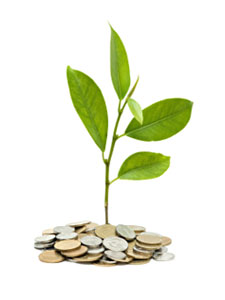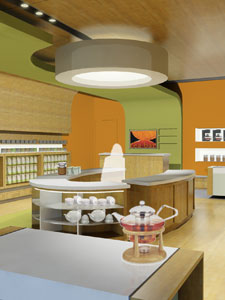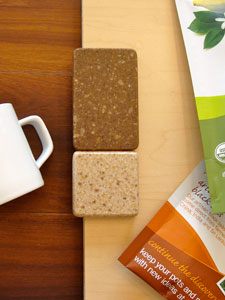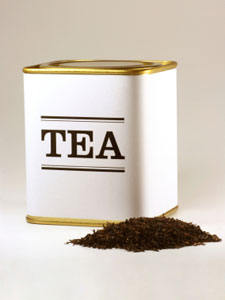Why Does it Cost So Much?




Sure, it’s nice to have, but are all those expensive design elements really necessary to open a successful Tea Shop? On a weekly basis I hear from existing and prospective tea entrepreneurs asking variations on this same question. I believe that a quick survey of the retail market and an analysis of human behavior answer this question.
In The Cost of Doing Business I estimated the cost of opening a Tea Retail shop at $250,000 (more for a Tea Room). This number is based in part on personal experience having opened five Tea Shops and/or Tea Rooms, with two more currently under construction. In part this number is based on what I learned from TeaGschwendner who has opened more than 145 Tea Shops in nine countries on four continents. In part this number is based on my research into the typical opening costs for the host of national retail chains that operate similar sized (800 to 2,000 square feet) locations.
While you can't argue with historical data, the question persists: "Why do these companies all choose to pay so much for store build-outs when it can be done for so much less?" For most of the people I talk with, a $250,000 investment simply isn't an option, and so the search begins for alternative strategies and some way of justifying going after the same objective with a fraction of the recommended budget.
If you've been around the Tea Industry for long, you've probably met people who have opened tea shops for anywhere from $20,000 to $150,000. Here's the recipe: Find a space in move in condition, buy basic shelving from Ikea or similar, and purchase the bare minimum in equipment and functionality. At the last World Tea Expo I talked with a friend who successfully opened for $17,000 "out of pocket" and has been cash flow positive since opening. After all, you don't need expensive lighting, hardwood floors, granite counter-tops, custom-built mill-work (furniture and fixtures), and an enterprise class Point of Sale system to sell a bag of tea.
The answer to the question - the argument in favor of investing the money - is Human Psychology and Competition.
Human Psychology, in this case, is the consistent preference that consumers show for luxury. By luxury I don't just mean expensive products, but also expensive retail environments. One example from the product side: if the objective of buying a car were simple transportation, the average vehicle sold in the US would not be a 4-door sedan for $27,000. The customer isn't just purchasing reliability, they are also buying styling and finishes. In short, they are buying a product that fits their self-image from a brand that fits their self image. Possibly the most obvious example of how Human Psychology drives product purchases is the obvious preference for name brand products over generics even when there is no discernible difference in ingredients or quality.
This same argument holds true for E-Commerce sites. A quick online search will yield thousands of websites selling tea. Why would companies invest hundreds of thousands of dollars in design, pictures and functionality like customer reviews or integration with social media if you can sell the same product on a $5,000 template shopping cart? Human Psychology. Customers simply prefer purchasing from higher quality websites because of their ease of use, better customer service options, perceived credibility, perceived security, and perceived advantages in product quality. Companies like Adagio sell millions of dollars worth of tea online every year. 90% of the tea websites out there never get past a couple hundred dollars per week in sales, never turn a profit, and never become more than a hobby for their owners. For more information on launching an Ecommerce site on a shoestring budget an how it CAN be done, read Getting Started: Ecommerce.
Human Psychology also drives the selection of a retail store. Discounters have been successful attracting the highly budget conscious shopper with bargain-basement prices in exchange for less "premium" shopping experiences. Even if you could drive huge volumes and handle razor-thin margins like WalMart, tea DOES NOT lend itself to this style of retailing. While tea isn't terribly expensive, gourmet tea is certainly a luxury good in comparison to milk, eggs and underwear. The typical premium tea drinker and your target customer is probably not doing all their shopping at stores like WalMart, Aldi and Payless.
Retailers like Williams Sonoma, Nordstroms and Pottery Barn understand that beautiful, comfortable shopping environments are a pre-requisite to attracting customers with disposable income and an appetite for luxury. The same logic that says don't need a luxury store to sell a luxury product suggests it makes no sense for anyone to pay full price for this year's designs/products when you can go to the outlet mall and get last year's designs/products for 50% off. And yet, MOST consumers choose to pay full retail for the latest fashions. Most consumers shop at "premium" grocery stores and willingly pay premium prices because they like the softer lighting and wider aisles. American consumers OBVIOUSLY prefer premium retail environments, and are willing to pay a premium to shop in them.
Possibly more important than the obvious preference for better designed and more expensive retail environments, there is a pretty good percentage of the population that relies on branding cues and subconscious assessments of quality in deciding whether to trust a retailer in the first place. Consumers don't much like buying eggs from a convenience store, designer handbags from a mom-n-pop discount store, or clothes from Sams Club. What is it about a small, independent retailer in a secondary location with vinyl floors, fluorescent lights and utility shelving that gives the consumer confidence that they are likely to find fresh, high quality teas from around the world at fair prices?
Finally, while you may be able to fill a vacuum in your market by opening a shoe-string tea shop, you're putting whatever investment you CAN afford to make in severe jeopardy. How long will it be before someone with more money looks at your shop and decides to open a "better" storefront in a better location? In short, even if you can get it open and break even for a fraction of the cost, you will be supremely vulnerable to competition.
While I've talked with, and am even pretty good friends with, quite a few people who have opened tea shops for between $50,000 and $150,000, I've NEVER met anyone who has done this AND been successful to the point that they could actually pay themselves a competitive wage. For most small tea shop owners, the store is a labor of love. For a few, they manage to eek out $35 or $40,000 a year in salary in exchange for their 80 hours a week. Personally, for as much as I love tea, I would not be interested in investing even $50,000 of my own money in exchange for an 80 hour a week job and all of the risks and stresses of owning your own business for $40,000 per year or less.
At the end of the day, no one can credibly say that it's impossible to beat the odds and open a successful shop on a shoe-string budget. That said, you need to understand the risks. In my experience, the odds of success increase dramatically the more money you spend on design elements that convey quality and professionalism. They say that more than 70% of new businesses fail in the first five years. My guess is that more than 70% of new businesses with adequate funding will SUCCEED! The question is this: would you rather invest $50,000 on a 20% chance of long term success, or $300,000 on an 80% chance of long term success? To believe that the additional cost of premium lighting flooring, shelving, packaging, etc. doesn't matter is to blatantly ignore the mountain of evidence offered by the hundreds of thousands of existing retail stores across the US.
Adagio Teas
Twitter: @AdagioRetail
